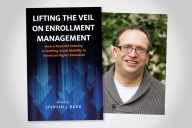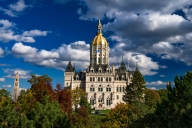You have /5 articles left.
Sign up for a free account or log in.
What do you get when you ask an artificial intelligence to curate a museum art exhibit?
The answer isn’t a punch line but can be found at Duke University’s Nasher Museum of Art, which allowed ChatGPT to curate the exhibit “Act as if You Are a Curator: an AI-Generated Exhibition.”
Short on staff and intrigued by the intersection of art curation and technology, the museum staff wanted to see if ChatGPT could do in months what can take human curators years.
“While museum professionals are far from relinquishing control of exhibition making and interpretation, this exercise is a powerful way to explore the applications of AI in the creative realm,” the Nasher Museum website said.
ChatGPT had its own opinions about the experience. The art website Artnet asked ChatGPT to write a review. The AI’s verdict? ChatGPT’s favorite part of the exhibit was that it was curated by ChatGPT.
In a glowing review of its own work, ChatGPT called the exhibit an “innovative showcase” that “offers a multifaceted glimpse into the evolving relationship between human creativity and machine intelligence, sparking profound questions about authorship, curation, and the very essence of art itself,” Artnet reported.
Creating the exhibit wasn’t as straightforward as asking the AI a simple question. Mark Olson, an associate professor in Duke’s art, art history and visual studies department, worked with his students to create a custom ChatGPT interface. To help ChatGPT understand the collection, they listed its nearly 14,000 objects by artist, title, date, medium, cultural group, keywords and description.

Nasher Museum of Art at Duke University officials asked ChatGPT to create an exhibit as a commentary of the intersection of technology and art.
ChatGPT, Nasher Museum of Art at Duke University
Then the curators “politely and enthusiastically encouraged” the chat bot to give enough recommendations to fill a 600-square-foot gallery, the museum website said.
ChatGPT chose an exhibit theme, centered on dreams, dystopia, utopia and the subconscious. It also created an exhibition title, introductory text, 50-word labels for the selected artworks and the suggested order in which to install the pieces in the gallery.
The process hit some roadblocks. A major criticism of ChatGPT and other AIs is their tendency to “hallucinate,” suggesting or citing works or quotes that do not exist. In the case of the Nasher exhibit, it suggested several pieces of artwork that did not exist.
The museum acknowledged the exhibit is not perfect but said it serves as a way to look at the impact of technology on museums.
“Artificial intelligence is a nascent technology, but one that is here to stay,” Marshall N. Price, the museum’s chief curator, said. “We hope this experiment will shed some light on its usefulness and limitations within museums, higher education and the creative industries more broadly.”









